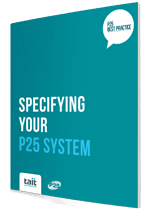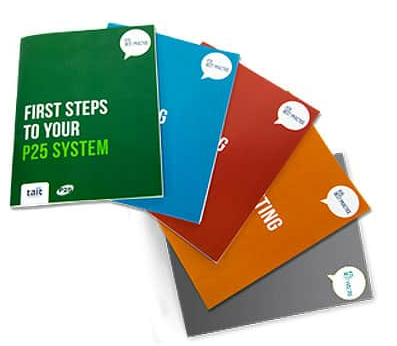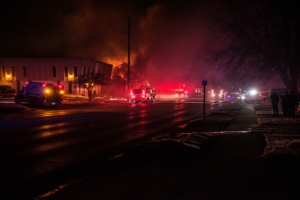Specifying is a crucial step in implementing your P25 system. It defines is a chronological approach, where most processes are iterative and impact each other. Learn more about specifying your P25 system with our free guide.
If you have a good understanding of your status quo and the future needs of your system’s users, it’s time to determine which technology might best fit for project.
Evaluate Available Technologies
This guide is written for Public Safety buyers of P25 systems, but this is not always your only option. If you are not sure which way to go, consider issuing a Request For Information, or RFI. If you have a functioning conventional analog site, you can increase capacity and storage with the addition of more channels and sites.
Advantages & Challenges of P25
No system is without both benefits and perceived shortcomings.
Advantages:
- Proven in mission-critical use, for nearly two decades
- Proven interoperability, with P25 compliance Assessment Program
- Multi-vendor ecosystems, to ensure competitive pricing
- Backwards capable, eases migration in mission-critical environments
Challenges:
- Voice quality is perceived as a problem by some users
- Limited data transmission (9.6Kbps)
- The standard is still evolving
- Low tolerance for interference compared to analog

System Architecture & Coverage Needs
Once you have made the basic technology choices. It’s time to define your system. You aren’t required to spend millions on switching or site controlling but you need to cover the basics:
- Coverage
- Capacity
- Resilience
- Interoperability
- Dispatch Operation
For most systems you need to define coverage needs, it’s difficult to define uniform coverage across an industry/work environment. There are other variables that need to be taken into consideration:
- Critical use areas – prisons, courthouses, hospitals
- High population density – urban areas
- Challenging terrain – mountains, canyons
- Challenging construction – “dead spots” in coverage

P25 System Functionality
P25 systems and devices may have three different levels of features and functions, these are Core Features, Standard Options, and Vendor Proprietary options.
Core Features are mandatory and all relevant P25 devices and systems but have them. Under certain certifications, there are mandatory core features:
- Group calls
- Common channel operation
- Affiliation
- Unit to unit & Broadcast calls
Standard Options should be selected with care. The broad experience of a good consultant may be invaluable to helping you decide which options to have:
- Over The Air Rekeying
- Group calls on a conventional system (Phase 1)
- Voice encryption on a trunked system
- Text messaging
Vendor Proprietary Options do not need to be included and vendors are free to implement them any way they want. These Vendor Proprietary features include:
- Over The Air Programming (OTAP)
- Patch Calls
- Dynamic Regrouping
- Free-form text messaging
With the specifications drafted for your new system, and your project stakeholders on board, you can begin to work through the process of procurement.
D ownload your Free Guide
ownload your Free Guide
This is only a brief taste of the resources available in the full Specifying your P25 System guide, available for free. Download your copy today.
 Download the full suite of P25 Best Practice guides.
Download the full suite of P25 Best Practice guides.
Learn more about P25 Best Practice.




